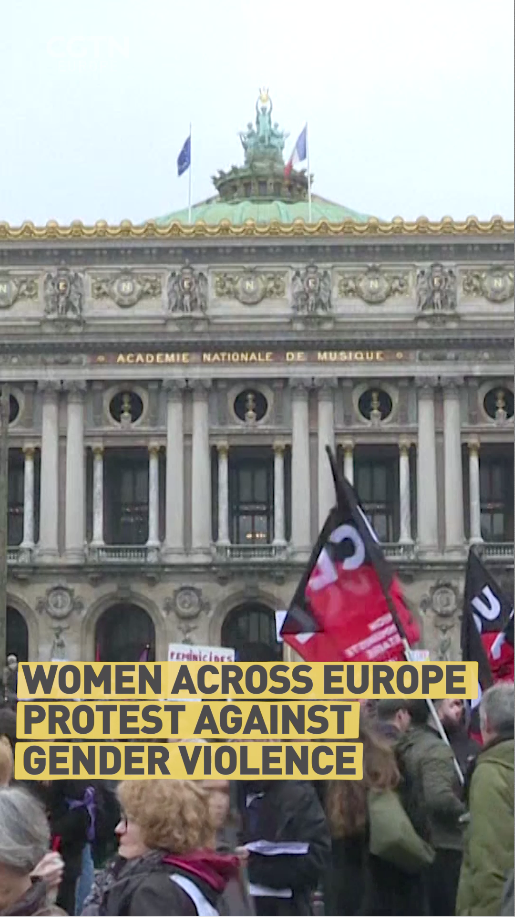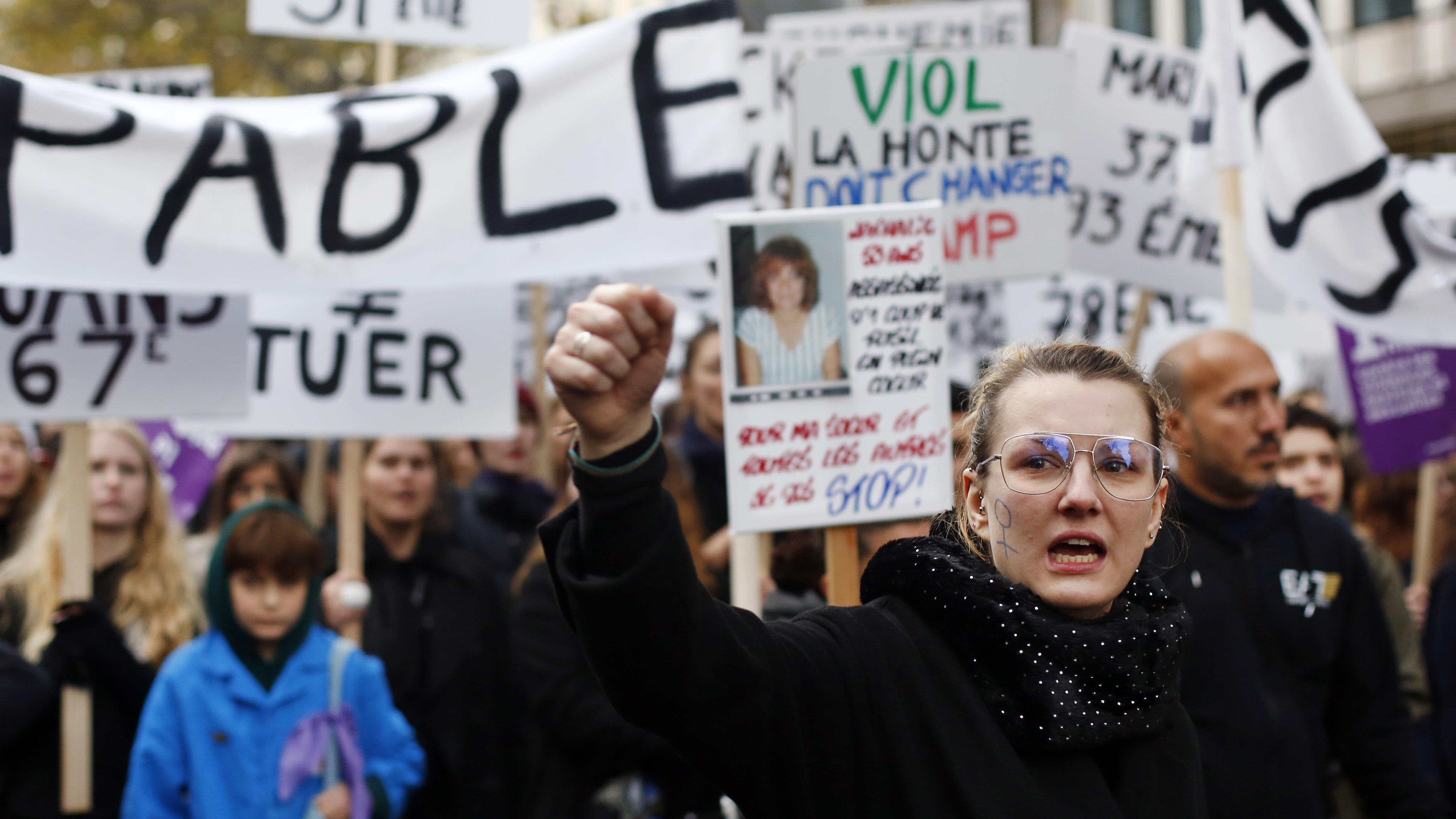01:05

The slogans "nous toutes" (all of us) and "non una di meno!" (not one less) filled the streets of France and Italy on Saturday as protesters demanded their governments take action to prevent gender violence.
Violence against women exists in every society but despite its scale and social impact, it remains largely under-reported and under-researched in key areas - and many believe that authorities are not doing enough to tackle the problem.

France has one of the highest rates of violence on women in western Europe (Credit: AP/Thibault Camus)
France has one of the highest rates of violence on women in western Europe (Credit: AP/Thibault Camus)
Demonstrations are taking place ahead of the UN's International Day for the Elimination of Violence against Women, which takes place on Monday 25 November.
In France, demonstrations have been timed to maximize pressure on the government before it unveils new measures on Monday to tackle gender violence. Caroline De Haas, one of the activists who organized the protests, tweeted "Mr. @EmmanuelMacron, in France we were 150,000 marching against violence. It has been a historical gathering. We demand for change. We demand means. On Monday, be there."
Reports and legislation
The European Commission published a report on gender violence based on interviews with 42,000 women across the 28 member states.
According to the survey, Denmark has reported the highest rate of domestic violence in the European Union with 52 percent of women experiencing sexual and physical attacks. It's closely followed by Finland with 47 percent and Sweden with 46 percent. France is in fourth position with 44 percent.
Current EU legislation and policies on violence against women mainly focus on trafficking and female genital mutilation, acknowledging that the nature of these crimes provides the EU with an entry point for addressing wider issues. However, most women who experience violence, do so in other ways like partner violence or sexual harassment.
The European Commission admits that many forms of violence against women are still not addressed explicitly through EU law. There is a lack of comprehensible and comparable data available to member states, which could be responsible for this gap in EU-law.
This is partly because women under-report acts of violence and many judicial systems struggle to bring offenders to account.
Only 31 percent of women in the EU report physical violence from a partner or ex-partner and only 39 percent report sexual violence. Meanwhile, only 24 percent of women report acts of physical violence from a non-partner and 30 percent of sexual violence from a non-partner.